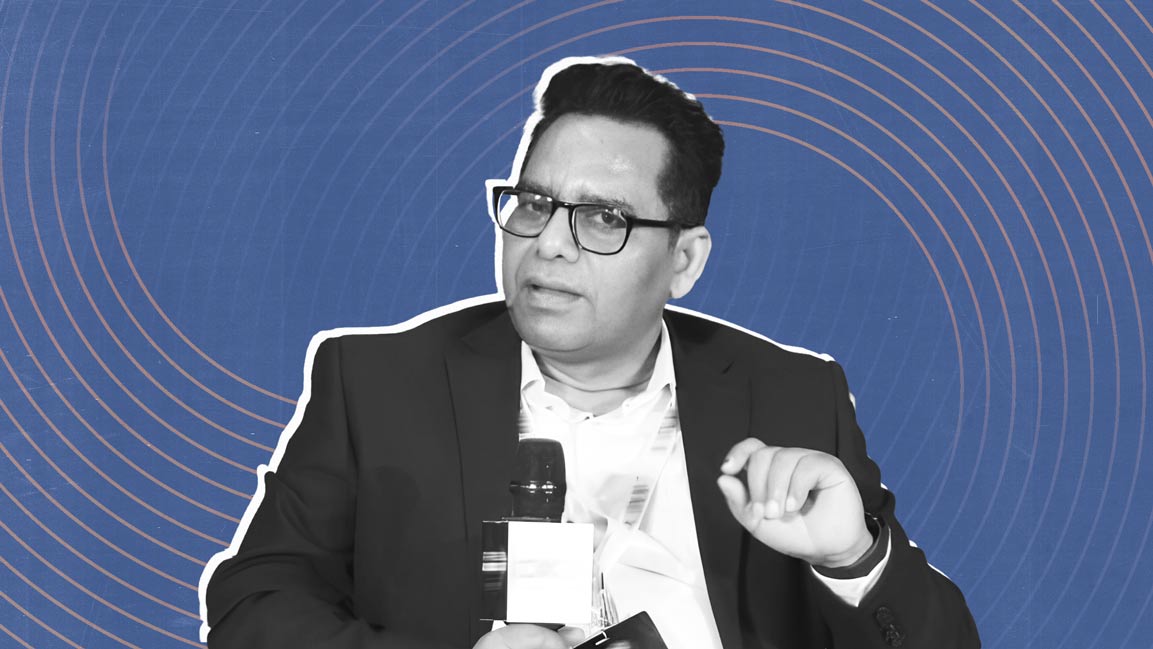How to Build Trust at Scale in the Age of Digital Insurance
Axis Max Life Insurance's Harvansh Singh Sagar shares how cloud-first systems, AI, and consent-by-design security are reshaping customer trust
News
- India Faces Lower Risk of AI Job Disruption Than the West, Says IT Secretary
- Tata Steel Discloses $1.6 Billion Dutch Class Action Over Emissions
- Nvidia Licenses Groq’s Inference Tech, Hires Leadership
- HCLTech Deepens Software Push With Three Acquisitions in a Week
- Isro Launches BlueBird Block 2 in Heaviest Commercial Mission Yet
- OpenAI Softens ChatGPT’s Tone While Scaling for an AI Showdown

When India’s insurance regulator raised the bar on transparency, digitalization, and consumer protection this year, Harvansh Singh Sagar didn’t see it as another set of boxes to tick. Instead, he saw it as a license to redraw the blueprint.
As Corporate Vice-President and Head of IT Infrastructure and Digital Operations at Axis Max Life Insurance, Sagar is using the moment to overhaul not just systems and processes, but the way the company thinks about trust, speed, and safety.
That shift starts with putting privacy and consent at the front of the customer relationship, not buried in the fine print.
“Axis Max Life is implementing a range of initiatives to enhance customer privacy and security while elevating the overall customer experience,” Sagar told MIT Sloan Management Review in an interview.
The specifics, he said, are non-negotiable: “strengthening cyber security protocols, adhering to data privacy and protection guidelines, ensuring customer consent for data usage, leveraging AI and ML technologies for fraud detection and underwriting, and adopting digital solutions such as DigiLocker and e-KYC.”
The company’s long-term strategy views technology not as an add-on but as foundational. Also, the aim isn’t simply automation, but anticipation.
“Advanced solutions such as AI, data analytics, chatbots, and virtual assistants are not only improving customer engagement but also supporting substantial business growth. These modern technologies provide predictive insights into customer behaviors, facilitate the development of highly personalized offerings, and strengthen strategic partnerships to capitalize on market opportunities,” Sagarsaid.
That philosophy has also reshaped how the IT function is structured internally. Monolithic systems have been broken down into microservices, giving teams the ability to move faster and respond more nimbly. “This in turn improves the time to market.”
The transformation runs deeper than infrastructure. “We leverage DevOps and CI/CD pipelines to efficiently build, test, and deploy code while maintaining stringent security standards,” he said.
Alongside that, enterprise-wide observability tools help detect friction early and maintain reliability across platforms: “supporting high reliability and providing predictive insights to enhance customer experience.”
But modernization at scale, Sagar cautions, is not a race. Not everything needs to be replaced in one sweep.
“We have implemented a Hybrid and Cloud-First strategy, ensuring that all new products and services are developed on cloud-native architectures,” he said.
And in cases where that’s not practical?
“We have adopted API integration approaches,” he added.
One test of that approach came during a sensitive transition: Axis Max Life’s shift to a unified domain identity.
“The primary challenge was ensuring a seamless customer experience during the transition to the new domain identity,” Sagar said.
That meant not just flawless technical execution but proactive communication.
“We proactively communicated with customers, highlighting the legacy and shared values of Axis Bank and the erstwhile Max Life Insurance, emphasizing the strength of their combined expertise in financial services,” he said.
The migration itself was tightly managed. “We adopted a phased migration strategy with rigorous testing at each stage to ensure full integration and minimize any potential disruption.”
Internal culture is also being reshaped through digital tools. One example is Bandhan 2.0, Axis Max Life’s in-house augmented reality (AR) platform with a metaverse feel, built to make onboarding and upskilling faster and more engaging.
Sagar said the system blends AR with gamification to turn company values into interactive experiences that are easier for new hires to absorb and remember.
The AI-powered platform delivers immersive, interactive content that helps recruits explore the company’s brand, history, and culture in a game-like environment. It also facilitates early virtual interactions with senior leadership, fostering stronger engagement and giving newcomers a clearer view of the organization’s strategic goals.
And the experience is accessible anywhere. “Bandhan 2.0 supports self-paced digital induction accessible on mobile devices, ensuring an efficient and effective learning process,” he said.
As more of the company’s engagement moves online, data security has had to scale alongside functionality. “The insurance sector is subject to rigorous regulation and requires a comprehensive approach to Cyber Security and Data Protection requirements,” Sagar said.
The company has put in place a layered security architecture that protects communication at every level.
Its approach goes beyond defense, using advanced threat detection to anticipate and neutralize risks before they escalate.
This is reinforced by continuous vulnerability scanning and a zero trust model designed to keep the technology environment secure.
Data handling practices are fully aligned with the principles of the DPDP Act, ensuring compliance is built into operations.
For Sagar, the long-term commitment is clear: trust must be engineered, not assumed. That means transparency in the user journey, scalable and resilient architecture, and a security mindset shared by both company and customer.
“None of it happens overnight—but if it’s done right, the technology fades into the background, and the experience just works,” Sagar said.




